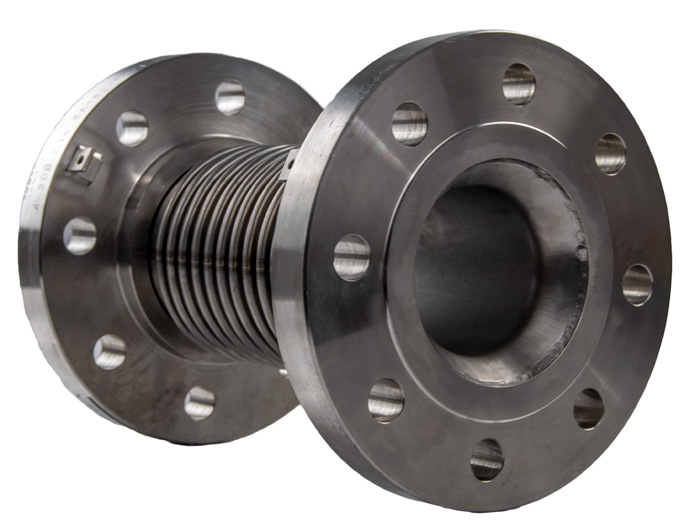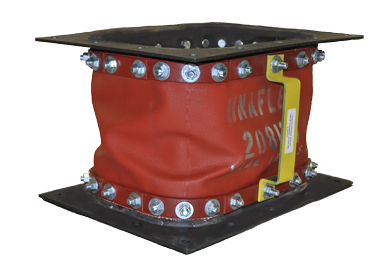Beyond Rubber Expansion Joints
Kadant Unaflex is well known for its highly diverse line of rubber expansion joint products. What may not be as widely known is Kadant Unaflex is the only manufacturer in North America to build all four major categories of expansion joints:
- Rubber expansion joints
- Metal bellows expansion joints
- Fabric expansion joints
- PTFE expansion joints
Each of these expansion joint styles has unique applications and, in some situations, may be substituted amongst each other. While the rubber expansion joint products can cover a wide assortment of applications, some situations are better suited for one of the other product lines. Temperature and pressure are two common factors that can call for metal or fabric expansion joints instead of rubber joints. Applications that use a media that is reactive to rubber compounds often in a degrative manner are another reason for using a metal or fabric expansion joint.
 Metal Bellows Expansion Joints
Metal Bellows Expansion Joints
Kadant Unaflex metal bellows expansion joints are manufactured to EJMA standards with the same attention to detail and customization that you have come to expect from Kadant Unaflex rubber joints. A metal expansion joint consists, in its most basic form, of a flexible bellow component and two ends allowing connection to the pipe system. This flexible element is usually fabricated from stainless steel sheets, rolled into a pipe, then formed using hydraulic or hydro power to create the bellows. A single bellows element that is internally pressurized may be prone to squirm. Squirm is a buckling effect caused when bellows are under compressive force, much as you would see in a slender column. Squirm of the bellows is characterized by a lateral deformation of the convolutions. To avoid squirm, preventative measures must be taken to limit the movements to ensure the integrity of the bellows beyond its stated pressure requirements. This is often attained by the addition of tie rods to increase the support and limit the movement allowances.
Design variations for bellows include dual bellow configurations that allow for greater movement capacity. Externally pressurized configurations are used in applications where greater amounts of compression are required. An externally pressurized bellows reverses the stresses on the bellow element and extends the bellows element when the joint is under compressive forces.
 Fabric Expansion Joints
Fabric Expansion Joints
Applications with high temperatures and low-pressure requirements are often ideal for fabric expansion joint use. Fabric expansion joints are comprised of two major components. The joint is attached to the pipe or duct line with a metal frame and the two ends of the metal frame are attached by a fabric belt. The frame component of these expansion joints varies between a few basic shapes. The “A” frame consists of two angle irons with the belt attached on the horizontal plane while the vertical planes attach to the ductwork. Another popular frame is the “J” frame. This frame has a standoff that holds the belt above the flowline and allows for added insulation competent. In addition to insulation, flow liners can be added to the configuration to prevent ash build up within the expansion joint for applications where sediment may be present in the gases.